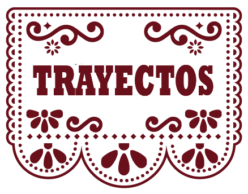The contents of each module in Trayectos are organized in three sections: comunicación, lengua, and cultura, and they are spelled out in the presentation pages (e.g., Módulo 3).
- Comunicación focuses on functional language and vocabulary presented in contexts related to university students’ experiences. The sections included within Comunicación are: Introducción comunicativa; Hablemos más; Y después… Uso, forma y cultura; Más comunicación; Cartelera; Lectura; Proyecto digital; and Conversemos. The activities that are part of these sections allow students to use Spanish actively in pair and group activities, and to be exposed to and produce multimodal ensembles (i.e., texts in which different semiotic modalities–e.g., linguistic [written and oral], visual, auditory–are combined).
- In lengua students are introduced to the rules that govern our use of the language (Hablemos de gramática sections). All structures are presented in a communicative context, accompanied by simple explanations based on the comparison between Spanish and English (i.e., we always depart from what the student knows). First, we guide learners through the discovery of how each structure works by providing them with questions to analyze the content presented, and then we introduce them to rules. Grammar is always tied to use. In addition, all Hablemos de gramática sections are followed by individual, pair, and group activities in which students can apply what they have learned both appropriately and creatively (see page on Learning by Design).
- Cultura focuses on both cultural aspects of the Hispanic/Latinx communities in the United States (Trayectos hispanos) and different countries in the Spanish-speaking world (Hablemos de cultura). Our main goal is to go beyond the usual, sanitized version of culture presented in commercial textbooks, and instead, to give voice to the unique contributions of Hispanic/Latinx communities to the United States and the world. Cultural content is presented through thematic readings, videos, images, and critical thinking tasks.
Next:

